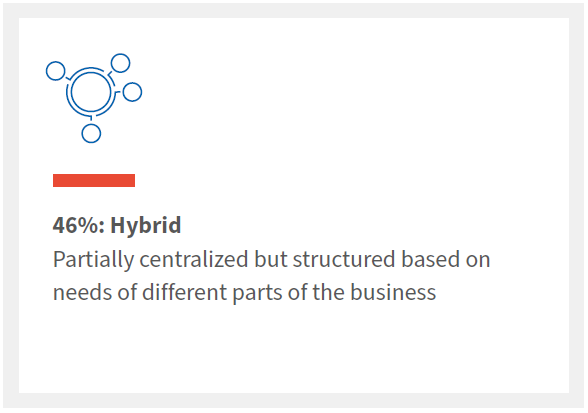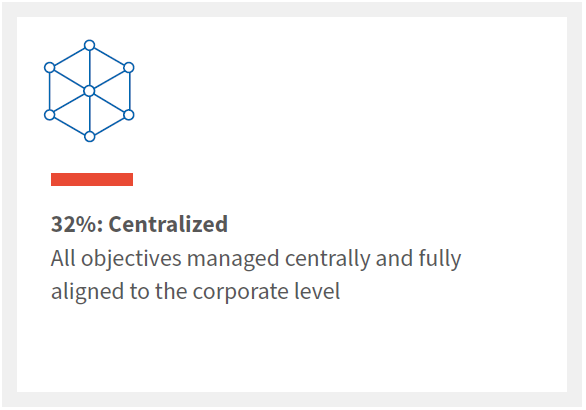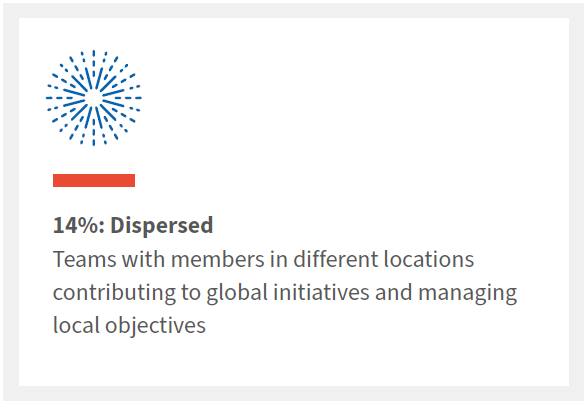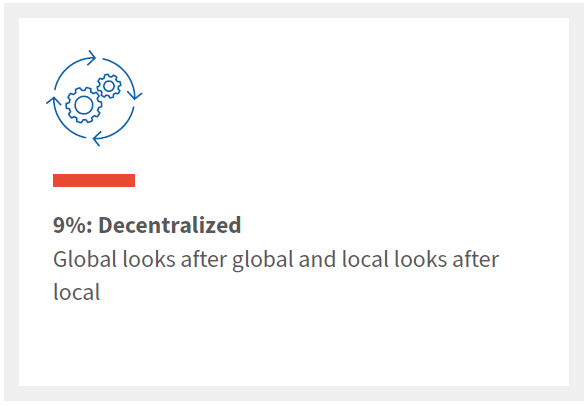What keeps Public Affairs leaders up at night?
Senior Managing Director and Global Head, Public & Government Affairs
[email protected]
Navigating internal and external risks and challenges to maximize impact
In an uncertain and volatile international environment, Public Affairs professionals are more important to companies than ever before. Despite this, many Public Affairs teams inhabit a contradictory position. Although they are functions of increasingly critical importance in protecting and expanding corporate operations, they nevertheless struggle to communicate and drive value within their organizations. Particular challenges are perceived in measuring the impact of their work, gaining access to decision makers, and in collaborating effectively with other functions.
Solving these challenges is vitally important for the optimal and effective use of Public Affairs teams. This report examines the nature of these challenges, the steps that can be taken to solve them, and explores the opinions and needs of the international Public Affairs leaders of today’s business world.
Top external priorities and risks for PA professionals
78% of Public Affairs leaders said that policy and regulatory fragmentation is a key trend that their organization will face in the 12 months ahead.
Almost 7 in 10 Public Affairs leaders fear that regulatory and compliance matters pose risks to their company over the next 12 months.
83% of Public Affairs professionals said they believed that ‘ESG and sustainability’ is likely to affect their company over the next 12 months.
Geopolitical headwinds through a policy lens
Businesses expect to be affected by geopolitical and economic turbulence into 2024. Ongoing warfare in Ukraine continues to pose considerable risks to wider security and market confidence. At the same time, the war has impacted energy pricing and created trade restrictions, with large implications for the operations and profitability of many businesses. More broadly, major economies are marked by record-high inflation and slow growth. Adding to these constraints, companies must also adapt to an increasingly polarized international order, fears of U.S.-China economic decoupling, and global regulatory and policy divergence. It is a challenging external environment, and given this context, it is unsurprising that 78% of Public Affairs leaders said that policy and regulatory fragmentation is a key trend facing their organization in the 12 months ahead.
Geopolitical relations are changing, and companies must adapt to this reality. The specter of great power competition means that multilateral diplomatic relations are fragmenting, with major implications for economic activity. As bilateral relations between the U.S. and China worsen, the U.S. is pushing its allies to completely sever, or heavily reduce their dependence on China. Shocked into action by the war in Ukraine, the EU is seeking to reduce its reliance on Russian energy supply.
Across the globe, economic and geopolitical developments are prompting countries to de-emphasize free trade, and instead to focus on regulations and interventions that benefit their own industries. Public Affairs leaders recognize the challenge that these changes create; 45% of respondents said their company or industry would be affected by nationalism, localization and polarization over the next 12 months.
Regulation is imposing a heavy burden
Regulatory challenges and political volatility are posing direct risks to companies around the world. Technology, taxation, and climate-related policy programs continue to generate increased regulatory intervention, placing pressure on many companies.
In this world of constant uncertainty, the need for business leaders to keep an eye on the horizon is greater than ever before. Executive teams and boards do well by engaging regularly and directly with Public Affairs leaders to understand the strategic implications of political volatility and changing policy landscapes on their business – both in the short- and longer term.
To maximize the value they offer executive teams, PA functions need to be deeply aligned with the commercial interests of their company. It is critical to be able to tailor PA strategies to relevant geographies as well as to deeply understand each market’s internal political, regulatory, economic, and financial dynamics in order to successfully identify political and regulatory developments affecting the business.
ESG expectations are mounting
Analysts expect a ‘regulatory tsunami’ of complex and prescriptive ESG rules and requirements during 2023. A wide range of new reporting requirements will affect the U.S. market as a result of new SEC rules, imposing significant new demands on companies. Building on earlier regulation, both the EU and UK are also pushing forward with more ESG requirements in 2023. Across these markets, companies must adapt to their changing regulatory reality.
In dealing with ESG requirements, companies must also navigate the contradictory priorities of different customer and investor constituencies. While environmental degradation and social injustice are spurring popular engagement with the ESG agenda, the very concept of ESG as a motivating force for corporate action is becoming increasingly politicized; influential voices within the financial sector and US state legislatures question the necessity and legitimacy of determining corporate investment and activities based on ESG criteria.
Key short-term priorities for respondents
Economic uncertainty, political risks, and increased regulatory demands dominate the external environment of global firms today. Faced with these challenges, expansion plans have been scaled back; in 2022, worldwide M&A deal value and volume fell by 29% and 6% respectively.14 To successfully operate within this business context, companies must effectively identify, adapt to, and forestall policy risks.
To manage these external challenges, Public Affairs leaders believe that their business executives should prioritize Public Affairs work. According to Public Affairs leaders, policy work, relationship-building, and public awareness-building are the top business priorities their organizations face in the 12 months ahead. 97% said ‘policy or regulatory change’ would be a priority for their organization. 81% said that ‘relationship building’ would be a priority for their organization; 75% said it would be ‘branding and public awareness’.
These results parallel the main priorities they went on to identity for the Public Affairs team itself – almost all (98%) of the respondents said that policy and regulatory change is a priority workstream for their team over the next 12 months. A further 91% said that relationship-building is a priority for their function. Three quarters of executives (75%) also said that branding and public awareness are
a priority.
“Irrespective of regulators and shareholders, the speed, scale, and transformative implications of technological advances will continue to affect companies around the world, bringing with them strategic challenges and opportunities. To thrive, a company must continually adapt and transform its products, services, and processes.”
Internal communication and alignment challenges mean Public Affairs teams are undervalued
Broadly considered, the purpose of a Public Affairs function is to monitor, analyze, manage and mitigate regulatory and political risk, while also identifying strategic opportunities for their company. The function must identify and proactively influence regulatory trends in support of the business strategy and objectives, and ensure that business leaders are informed in a timely manner of key external developments. Considering this core remit, it is crucial for Public Affairs leaders to be able to understand and balance commercial, Public Affairs, and business priorities.
In pursuing their internal remit, Public Affairs teams must work closely with affiliated functions such as communications, marketing, investor relations, and sustainability to help shape and support the broader business strategy. Alongside this, they must position themselves as strategic information brokers and relationship builders for the wider organization, providing other functions with timely and strategically relevant information on political and regulatory trends, and helping the company develop useful relationships.
Public Affairs teams are struggling to communicate their value. This hinders their internal influence.
To build an effective Public Affairs function, leaders must consider a range of factors
The importance of team structure
A major determining factor of C-suite access and wider organizational influence is the structure of the PA function. The structure and size of Public Affairs teams varies with the needs of each organization. Global corporations may need central, regional, and national sub-functions while other industries may require product specific and embedded PA teams distinct from those within HQ.
Reflecting the diverse needs of their employers, four organizational forms were exhibited by the Public Affairs teams we surveyed.
Four models for a well-functioning Public Affairs Team




About this Survey
FTI Consulting’s Strategy Consulting & Research team designed the methodology for the research and ran the survey. Respondents were sourced using contacts from FTI Consulting’s global network of PA professionals, and the survey was in field from 11 January to 5 February 2023. This survey was conducted anonymously to minimize bias and promote transparency in respondents’ answers.
The survey asked respondents about subject matters including their company, their company’s business priorities, external factors affecting their organization, and their perceived position of Public Affairs within the organization.
Participants responded to questions on topics including their companies, priorities, external environments, and perceived position within their organizations. Our report is based upon the survey responses of 71 Public Affairs leaders.
For more information please contact Dan Healy at [email protected].
The views expressed in this article are those of the author(s) and not necessarily the views of FTI Consulting, its management, its subsidiaries, its affiliates, or its other professionals.
©2023 FTI Consulting, Inc. All rights reserved.



